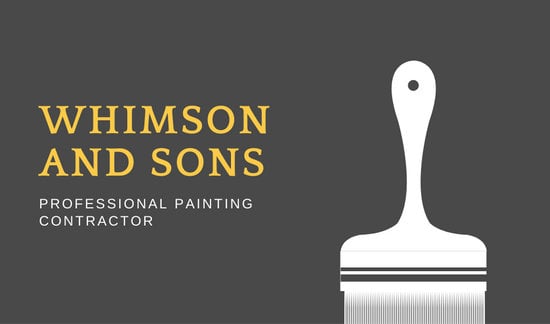Explore The Impact Of Seasonal Elements On The Performance Of Commercial Exterior Painting And Recognize The Optimal Times To Accomplish Long-Lasting Outcomes For Your Job
Explore The Impact Of Seasonal Elements On The Performance Of Commercial Exterior Painting And Recognize The Optimal Times To Accomplish Long-Lasting Outcomes For Your Job
Blog Article
Post Developed By-Doherty Urquhart
When you're planning a business outside paint job, seasonal factors can make or damage your results. You'll wish to consider exactly how temperature level and humidity effect paint application and drying times. Choosing the right season can guarantee your paint sticks appropriately and lasts longer. Yet which seasons are absolutely the best for this sort of job? Allow's discover the crucial elements that can influence your task's success.
The Impact of Temperature on Paint Application
When you're planning an industrial exterior paint job, the temperature can considerably affect exactly how well the paint sticks and dries out.
Preferably, you intend to paint when temperature levels vary in between 50 ° F and 85 ° F. If it's also chilly, the paint might not heal effectively, leading to problems like peeling off or cracking.
On the flip side, if it's too warm, the paint can dry too quickly, protecting against appropriate adhesion and resulting in an irregular surface.
You should likewise think about the moment of day; morning or late afternoon supplies cooler temperatures, which can be much more positive.
Constantly examine the maker's suggestions for the particular paint you're using, as they often offer assistance on the ideal temperature array for optimum results.
Moisture and Its Result on Drying Times
Temperature level isn't the only ecological factor that affects your commercial exterior painting task; humidity plays a significant role too. High humidity degrees can slow down drying out times drastically, impacting the general top quality of your paint task.
When the air is filled with dampness, the paint takes longer to cure, which can cause concerns like poor attachment and a higher danger of mold development. If you're repainting on an especially moist day, be planned for prolonged wait times in between coats.
It's vital to check regional weather conditions and strategy appropriately. Preferably, should ceilings and walls be the same color for humidity degrees in between 40% and 70% for optimum drying.
Keeping paint expire in mind ensures your project stays on track and delivers an enduring finish.
Best Seasons for Commercial Outside Painting Projects
What's the best time of year for your industrial external painting projects?
Springtime and early fall are usually your best choices. Throughout these periods, temperatures are mild, and moisture levels are commonly reduced, developing excellent problems for paint application and drying.
Stay clear of summertime's intense heat, which can trigger paint to completely dry also swiftly, leading to bad bond and coating. Similarly, winter season's cold temperatures can prevent proper drying and treating, taking the chance of the long life of your paint work.
Aim for days with temperatures between 50 ° F and 85 ° F for optimal outcomes. Keep in mind to inspect the neighborhood weather report for rainfall, as damp problems can destroy your project.
Planning around these elements guarantees your paint project runs efficiently and lasts longer.
Conclusion
In conclusion, planning your commercial exterior painting projects around seasonal considerations can make a considerable difference in the outcome. By organizing job during the perfect temperatures and moisture levels, you'll guarantee better attachment and drying out times. Keep in mind to watch on local weather report and pick the right time of year-- springtime and early loss are your best options. Taking these steps will certainly assist you accomplish a resilient and expert surface that lasts.
